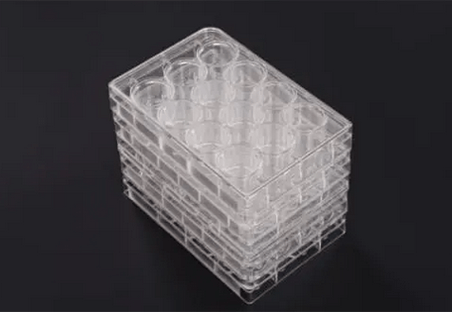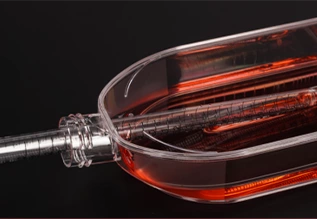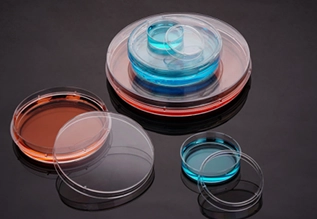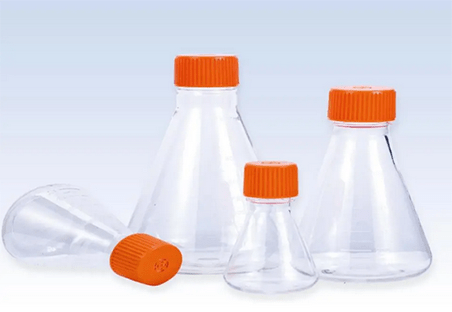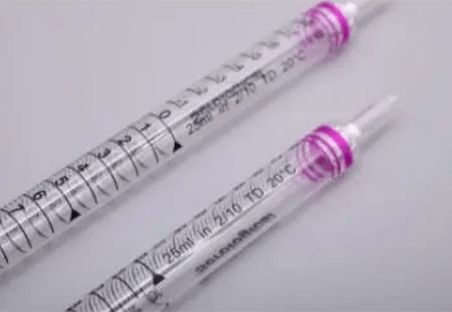Cell culture is a basic technique in biological research. It enables scientists to isolate and grow specific cell types outside of living organisms, resulting in a controlled environment for experimentation. Cell culture flasks are the primary housing for isolated cells in cell culture. These sterile plastic containers create a controlled environment that includes essential nutrients, gases, and a suitable surface for cells to adhere to and grow. There are different sizes of cell culture flasks, such as T25, T75, and T175. Each size provides a specific growth area or available space for cells to attach and proliferate. Choosing the right cell culture flask size is critical for optimum cell growth. A cell culture flask that is too small can cause overcrowding, which impairs cell health and division. In contrast, using a large flask for a small number of cells can result in wasted space and inefficient use of culture medium. Understanding the factors that influence cell culture flask size selection allows researchers to ensure the success of their cellular experiments.
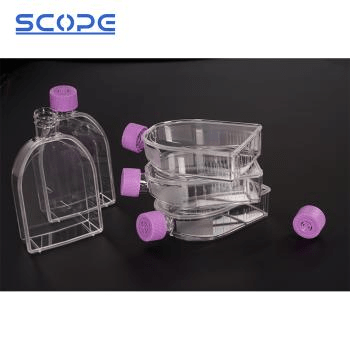
What Are the Differences Among T25 Cell Culture Flasks, T75 Cell Culture Flasks, and T175 Cell Culture Flasks?
| Feature | T25 Flask | T75 Flask | T175 Flask |
| Growth area | 25 cm² | 75 cm² | 175 cm² |
| Volume | 5-10 mL | 15-20 mL | 30-50 mL |
| Cell number | 1-2 million cells | 4-6 million cells | 8-10 million cells |
| Applications | Initial cell culture, small-scale experiments | Maintaining cell lines, larger-scale experiments | Large-scale cell culture, production of cells for biopharmaceutical applications |
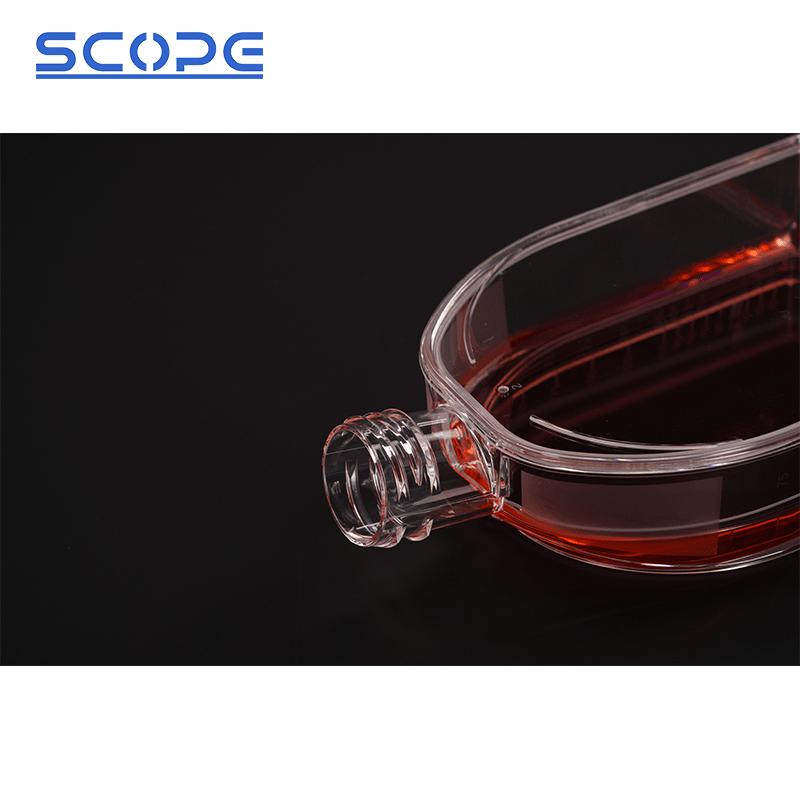
Which Cell Culture Flask Size (T25, T75, T175) Should I Use for My Experiment?
Choosing the appropriate cell culture flask size (T25, T75, or T175) is determined by several experiment-specific factors. Here are some considerations to help you decide:
Factor 1: Number of Cells and Seeding Density
- T25 Flask (25 cm²): Ideal for starting cultures and maintaining small cell lines. Typically used with 1-2 million cells and a seeding density of 2,000-4,000 cells per cm². This provides enough space for initial attachment and growth without overcrowding.
- T75 Flask (75 cm²): Ideal for larger cultures or large-scale experiments. Begin with 4-6 million cells and a seeding density of 1,000-2,000/cm². This increases the growth area for established cell lines or experiments that require more cells.
- T175 Flask (175 cm²): Ideal for large-scale experiments and suspension cell cultures. Seeding density is typically lower (500-1,000 cells/cm²) due to the large available area. This enables significant cell expansion or the efficient growth of suspended cells that do not adhere to the flask surface.
Factor 2: Experiment Type
- Cell line initiation or maintenance: T25 flasks are useful for starting new cultures or storing small numbers of cells for later use.
- Large-scale experiments requiring high cell numbers: Choose T75 or T175 flasks based on the desired cell yield. T75 provides a good balance for medium-sized experiments, whereas T175 is designed for large-scale protein production or harvesting experiments.
- Suspension cell culture: T175 flasks are ideal for suspension cells that grow freely in their medium. The larger volume allows for more efficient mixing and nutrient distribution for these non-adherent cells.
Factor 3: Cell Growth Characteristics
- Consider your cell line’s expected growth rate and density. If your cells divide quickly and reach confluence (full coverage), a larger flask (T75 or T175) may be required to avoid overcrowding and promote healthy growth.
- Slow-growing cells may benefit from a smaller flask (T25) to minimize space and optimize nutrient concentration.
Factor 4: Media and Reagent Consumption
- Using a larger flask (T75 or T175) requires additional cell culture medium and reagents. Evaluate your budget and experiment duration to see if the increased media volume is manageable.
Additional Tips:
- Start Small, Scale Up: Start with a T25 flask for cell line expansion. Once you’ve collected enough cells, move them to a larger flask (T75 or T175) for further experimentation.
- Consider Splitting: If your cells grow quickly and reach confluence prematurely in a T25 flask, consider splitting them (transferring a portion of the cells) into a larger flask (T75) to keep optimal growth conditions.
Please remember that there is no one-size-fits-all solution. By taking into account the factors listed above or consulting with a professional lab consumable supplier. you can choose the best cell culture flask size (T25, T75, or T175) for your particular experiment and ensure the success of your cell culture efforts.
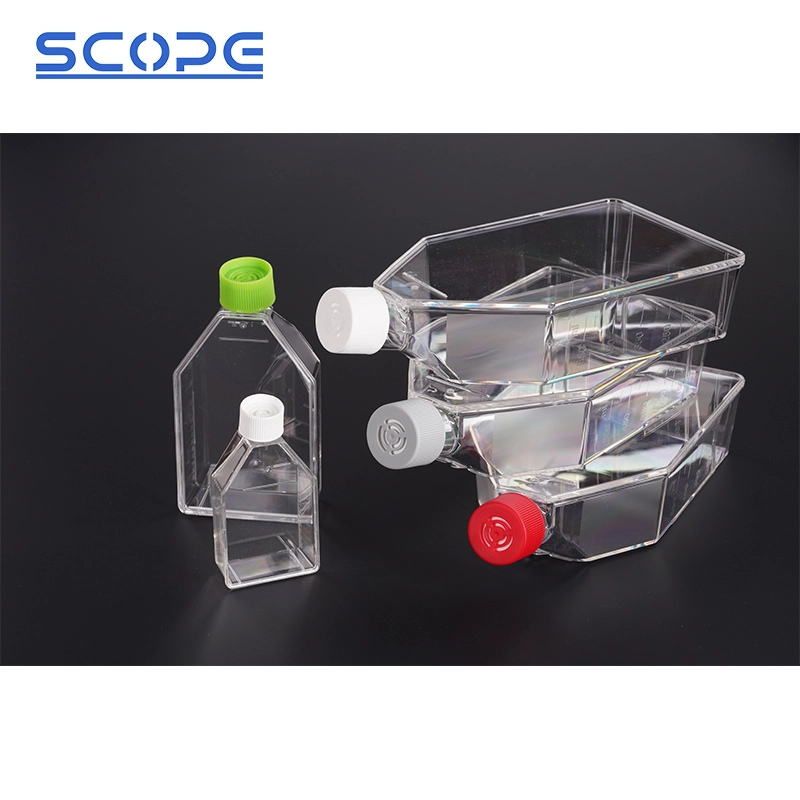
Can I Use a T75 Cell Culture Flask for the Same Cells As a T25 Cell Culture Flask?
Yes, you can use the same cell line in both the T25 and T75 cell culture flasks. The key difference is that the seeding density is adjusted based on each flask’s available growth area. Here’s an explanation of why you can use the same cells in different flask sizes:
- Cell Line Compatibility: The flask material (typically polystyrene) and basic culture environment remain constant regardless of size (T25 or T75). The cell line is compatible with both flasks as long as the proper cell culture conditions (medium, temperature, and CO2) are followed.
- Surface Area Matters: The primary distinction is the growth area available for cell attachment. The T25 flask has a surface area of 25 cm², while the T75 flask has a larger area of 75 cm².
- Seeding Density Adjustment: To achieve optimal growth in both flasks, adjust the number of cells seeded (plated) initially. Seeding density refers to the number of cells per square centimeter (cm²).
An Example
| Seeding in T25 Flask | Seeding in T75 Flask |
| If you typically seed your cells in a T25 flask at a density of 2,000 cells/cm², you’d introduce approximately 50,000 cells (2,000 cells/cm² x 25 cm²). | To maintain a similar initial cell density in a T75 flask, you would need to seed twice the number of cells (due to the larger surface area). This translates to roughly 150,000 cells (2,000 cells/cm² x 75 cm²). |
Important Considerations
- Maintaining Optimal Cell Density: The goal is to strike a balance between providing adequate space for initial attachment and avoiding overcrowding. Overcrowding can cause competition for nutrients and oxygen, limiting cell growth and viability.
- Cell Growth Characteristics: Consider your cell line’s growth rate. If your cells divide rapidly, a larger flask (T75) may be required to accommodate their growth and prevent premature confluence. Slow-growing cells, on the other hand, may perform better in a T25 flask due to the higher cell density required for optimal growth.
Additional Tips
- Consult Cell Line Resources: Determine whether any established protocols or recommendations exist for your specific cell line. This could help determine the best seeding densities for various flask sizes.
- Pilot Experiment: For critical experiments, conduct a small-scale pilot experiment in both flask sizes to determine the optimal seeding density for your cells and conditions.
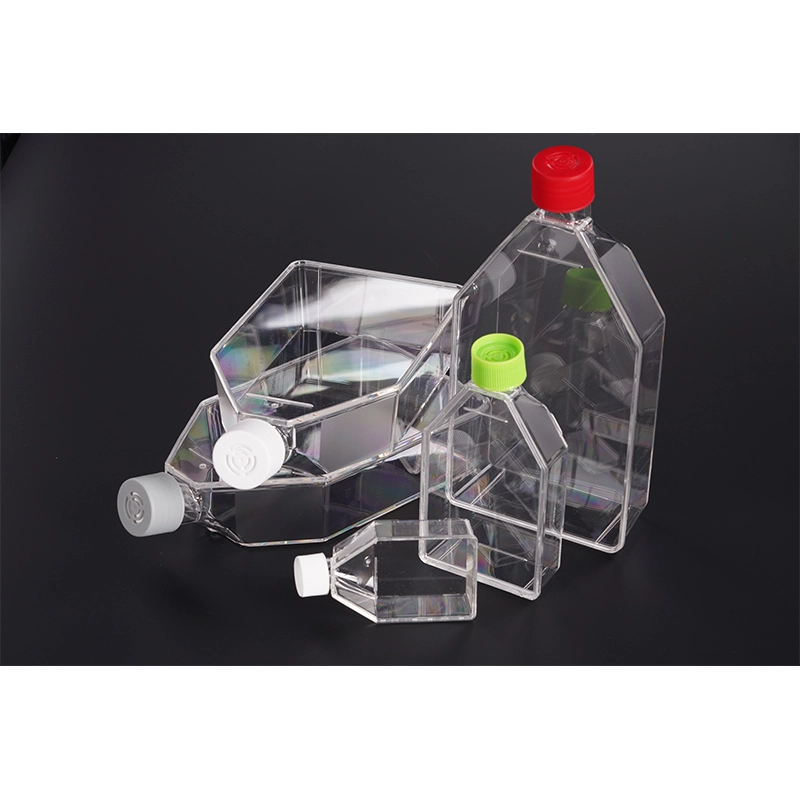
Conclusion
Choosing the right flask size has a direct impact on cell health and proliferation. A suitable flask has an optimal surface area for cells to attach, grow, and divide efficiently. Choosing an incorrect flask can result in wasted resources. A flask that is too large for the number of cells requires extra culture medium and reagents. In contrast, a flask that is too small may necessitate frequent splitting, which can be time-consuming and stressful for the cells. Cell density is critical in many cellular processes. The appropriate flask size allows you to maintain the ideal density for your experiment. For example, some experiments require cells to reach a certain level of confluence before being analyzed.
